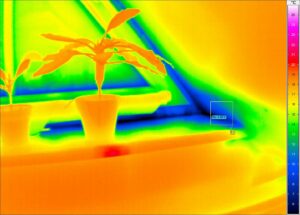Cold weather really inspires me to write me this short text about my experience with the thermographic measurements. There was a period of time when I was heavily involved in thermographic inspection activities and was a officially certified person for this. Anyway the certificate has already expired and I take this activity just as one part of my work portfolio.
Wet building walls
The most work I did was related to housing. Especially when the reconstruction of the old
house is ahead it’s good to know what is the current state of the building. When an additional insulation layer is going to be installed it’s also good to check how it is with the moisture in the wall. If the moisture issue is not treated properly comfort of living can be affected after the insulation is installed on the exterior walls.
Sometimes there is also some surprises revealed, such as walls which were in deep past rebuild using some really nasty material. This kind of information could be also very helpful for the owner, when the building is just before the renov ation.

Another issue which I solved many times was a fungus on the interior walls. Many people were disputing whether there is an error in the project (so the house designer should be punished) or whether there is insufficient ventilation in the house – this was the argument of the house designer/builder. So how to deal with it. There is no such straight way how to sentence such a dispute so I developed just for myself kind of a script which actual recalculates inner and outer temperatures a put it together with the temperature and moisture limits which are used for designing houses and indoor environment control. Than I was ready to tell the house owner: „change the air more intense“ or „go and beat the house designer (or builder)“
Anyway, as many things, the thermographic pictures could be a good serve but a really bad master. It’s easy to take a picture but what about the real temperature? There is a plenty of risks coming from the measured surface emissivity which is sometimes not easy to get and sometimes it is necessary to deal with the „reflected temperature“ from other surfaces.
When looking on buildings, the temperatures are quite ok (emissivity of the facade is very close to 1) but it’s not very correct to use those temperatures for calculating e.g. thermal loss of the building. Especially the exterior facade temperature is affected by wind and external temperature and their oscillation during the day/night. And also the heat capacity of the walls play a role.
But still if one knows what to focus on, how to interpret the thermogram, the method could be very helpful in revealing possible troubles in the construction.

Here you can see the camera I use. It is Jenoptik Variocam – Inspect 580. It’s has some age but in the time it was pretty good tool which can easily compete with todays standards.